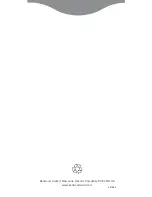
48
15.
ACAI
15.1.
ACAI Function
When unit weight is calculated, the larger the number of samples are, the less error is caused because
variation in weight per sample is averaged. However, it is difficult to precisely count a large number of samples.
With the ACAI
TM
(Automatic Counting Accuracy Improvement) function, counting can be started with a small
number of samples. And each time samples are added within the range that does not cause counting errors,
unit weight is re-calculated and updated.
Precautions for using ACAI
Make sure to use the ACAI function after registering unit weight. Also, leave samples on the weighing pan.
Do not remove samples from the weighing pan until ACAI operations are finished.
There is no need to precisely count samples to add. The range of addable number of pieces is that where
the ACAI mark lights up.
Repeatedly perform ACAI operations up to near the maximum number of pieces to count.
Even if the same samples are to be counted, to precisely count them, keep registering the sample and
performing ACAI operations every time.
If unit weight is set with the numeric keys or unit weight is called up from memory, it is regarded that 10
samples are registered. With the factory setting, operations are performed manually (with the
ENTER key). To switch to automatic operation, set function setting
to “ ”, and
to “ ”.
15.2.
Automatic Operation of ACAI
1. Before performing ACAI operations, register a unit weight.
Leave samples on the weighing pan.
2. Add samples within the range where the ACAI mark lights up (refer
to the table on the next page).
The ACAI mark lights up within the range where ACAI is possible.
As a rough standard, about the same number of pieces as that
which is shown in the display can be added.
ACAI
ACAI mark
















































